A heat-resistant silicone wire is a type of electrical wire engineered to endure extreme heat. These wires are indispensable in scenarios where ordinary wires would deteriorate or malfunction, thus becoming a vital element in numerous industrial, commercial, and consumer products. The robustness and pliability of heat-resistant silicone wires render them perfectly suited for demanding settings where exposure to intense heat or fluctuating temperatures is likely.
Types and Characteristics of Heat-Resistant Silicone Wire
There exists a spectrum of heat-resistant silicone wires, each crafted to fulfill distinct requirements. Wires with a pure copper core are sought after for their exceptional electrical conductivity and come in sizes from 4 AWG to 24 AWG. Conversely, copper-clad aluminum wires present a lighter, more economical choice, apt for less critical uses. For situations involving exceedingly high temperatures, conductors composed of nickel or nickel-chromium are employed for their superior heat tolerance. Each variant is customized to deliver peak performance in diverse electrical frameworks, guaranteeing dependability and safety.
Structure and Operation of Heat-Resistant Silicone Wire
The heat-resistant silicone wire consists of a conductor, an insulation layer, and occasionally an outer sheath. The conductor, responsible for transmitting electrical current, is sheathed in a silicone insulation layer that shields it from extreme temperatures. Some models include an additional stratum of fiberglass or other heat-resistant substances to reinforce the wire against physical damage and provide extra thermal insulation. This composite construction not only bolsters the wire's endurance but also assures its stable function across a variety of temperatures and conditions.
Materials and Properties
The constituents of heat-resistant silicone wires are selected for their outstanding attributes. Pure copper is preferred for its high electrical conductivity and malleability, while copper-clad aluminum strikes a balance between conductive efficiency and weight, suitable for scenarios where mass is a factor. The silicone insulation inherently resists heat, is flexible, and possesses excellent dielectric strength, making it the insulation of choice for high-temperature settings. Additional materials like mica can endure temperatures up to 1000°C, providing an extra defense in the most extreme conditions.
Business Usages and Applications
Heat-resistant silicone wires are crucial across various commercial landscapes. In manufacturing, they feature in the internal wiring of appliances such as ovens, furnaces, and lighting systems. The automotive industry employs these wires within engine bays where heat levels can be particularly high. In aerospace, their ability to cope with the significant temperature fluctuations and rigorous conditions of flight is invaluable. These wires not only facilitate the safe functioning of machinery but also enhance the durability and dependability of the products they are incorporated into, thus fostering business efficacy and value.
Functions of Heat-Resistant Silicone Wire
The fundamental role of heat-resistant silicone wire is to sustain electrical connectivity in settings where typical wires would be compromised by heat. They are engineered to convey current without the conductor or insulation degrading, ensuring that electrical systems remain operational, even under intense heat. This feature is paramount in safety mechanisms, medical apparatus, and power supply systems where failure is unacceptable.
Features of Heat-Resistant Silicone Wire
Heat-resistant silicone wires are characterized by high dielectric strength, superior thermal stability, and resistance to moisture, chemicals, and ultraviolet light. These properties make them uniquely suitable for harsh conditions and a preferred alternative to standard wires. Their flexibility eases installation, and their longevity renders them a cost-effective option over time, as they necessitate less frequent replacement than other wires.
Benefits of Heat-Resistant Silicone Wire
Employing heat-resistant silicone wire offers numerous advantages. It ensures dependable performance in critical applications, reduces operational downtime thanks to its durability, and curtails maintenance expenses. For enterprises, this equates to heightened safety, efficiency, and profitability. Users can rely on their systems to function seamlessly, even when confronted with high-temperature challenges.
How to Use and Maintain Heat-Resistant Silicone Wire
Optimal utilization of heat-resistant silicone wire entails correct installation and routing to avert overheating and mechanical harm. Selecting the appropriate wire requires consideration of the application's specific demands, such as the temperature range and electrical load. Routine maintenance should involve checks for wear and tear, ensuring the wire remains uncontaminated and free from substances that could impair its performance. Proper upkeep prolongs the wire's lifespan and upholds its safety and efficacy.
Target Audience and Meeting Needs
The intended market for heat-resistant silicone wires encompasses sectors operating in high-temperature conditions or in need of wiring solutions resilient to severe environments. This includes industrial machinery manufacturers, automotive firms, aerospace engineers, and medical device producers. These wires satisfy the rigorous standards of these fields by providing a dependable and secure method for power and signal transmission, ensuring uninterrupted operation of essential systems.
What are the color options for heat-resistant silicone wire?
Color coding is a critical feature of electrical wiring for straightforward identification. Heat-resistant silicone wires come in a range of hues, such as yellow and blue, facilitating swift discernment of distinct circuits and guaranteeing correct connections within intricate wiring networks.
What are the conductor material options for heat-resistant silicone wire?
The conductor material is a pivotal element of heat-resistant silicone wire. Choices include pure copper, renowned for its unmatched electrical conductivity, and copper-clad aluminum, which provides a lighter, budget-friendly alternative. For applications subject to high temperatures, conductors fashioned from nickel or nickel-chromium are available, offering increased heat resistance.
What are the insulation material options for heat-resistant silicone wire?
The insulation material is central to the performance of a heat-resistant silicone wire. Besides silicone, materials such as IEC rated compounds, FEP, fiberglass, PFA, ETFE, and mica are employed to provide varying levels of heat resistance, pliability, and sturdiness. The selection of insulation material hinges on the specific needs of the application, including environmental conditions and electrical requirements.
For businesses in search of reliable and robust wiring solutions that can endure high temperatures, Alibaba.com presents an extensive array of heat-resistant silicone wires. These wires are meticulously engineered to cater to the demands of diverse industrial applications, assuring safety and efficiency in demanding settings.

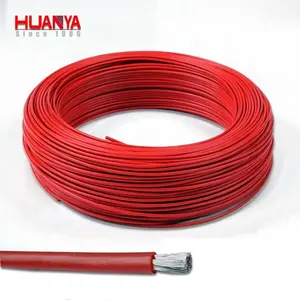











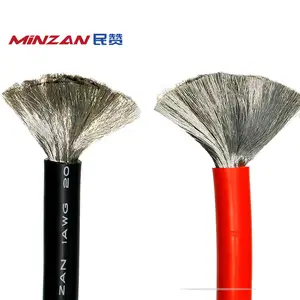

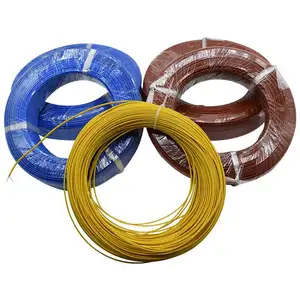
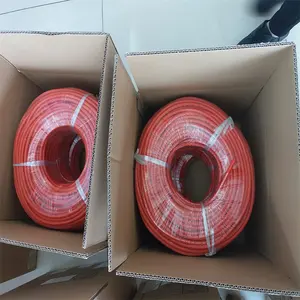




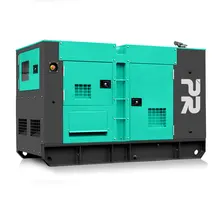























 浙公网安备 33010002000092号
浙公网安备 33010002000092号 浙B2-20120091-4
浙B2-20120091-4